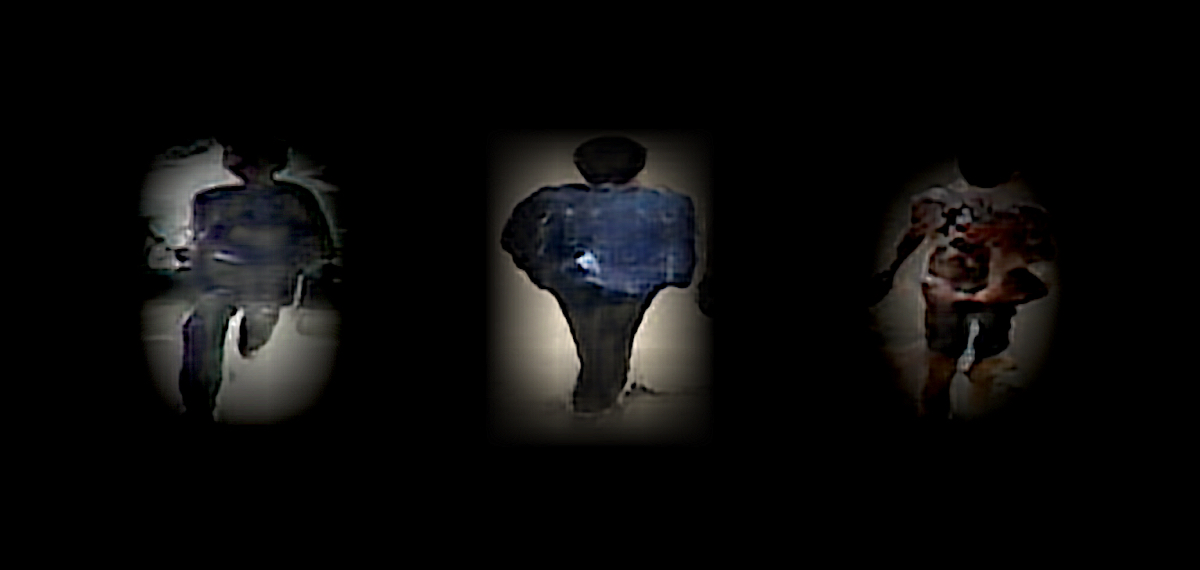Tristan Dot & Mathieu Rita
Dreamy cops, (2021)

We trained a Generative Adversarial Network (GAN) on a dataset of CCTV cameras snapshots. Dreamy cops shows a dystopian journey in the latent space of the network, during which bodies are being formed and deformed. Training has been stopped early, such that output people only appear as fantomatic, shady and almost inhuman. The gradients of light are controlled by the Discriminator that evaluates how close the generated apparitions are to real pedestrians.
The aim of Dreamy cops is twofold. It first depicts the alienation of modern monitoring methods that track population -such as facial recognition, or behavior analysis. The idea here is to transform the technology used to monitor population (convolutional neural networks), and the datasets used to train this monitoring (CCTV cameras snapshots), into an artistic reflexion: the cops (for instance the facial recognition networks) can also be artists (when their technology is used to generate new, dreamy images).
Secondly, Dreamy cops aims at giving a visual representation of the internal functioning of GANs, when parameters are fixed: the images correspond to the Generator outputs, while the gradients of light represent their Discriminator score. What we see is an insight into the Generative Network (a kind of artistic cop ?) constant work: trying to create, and spot pedestrians among random images.
This artwork can also be perceived as a reflection on the notion of image: what is an image, when it is never perceived by a human being (as it is the case for a lot of CCTV cameras images) - when it is pure digital data, only treated by neural networks ? Could these networks create their own world, composed of their own private digital images, far from any human eye ? These reflections, on the notion of digital image streams, questioning the particularities of the algorithmic medium, and the very nature of discrete images in the current era (particularly when they are only treated, and “seen” by algorithms), are well developed in the book Le Supermarché du visible (Les Éditions de Minuit, Paris, 2017), by philosopher Peter Szendy.
Back To The Gallery